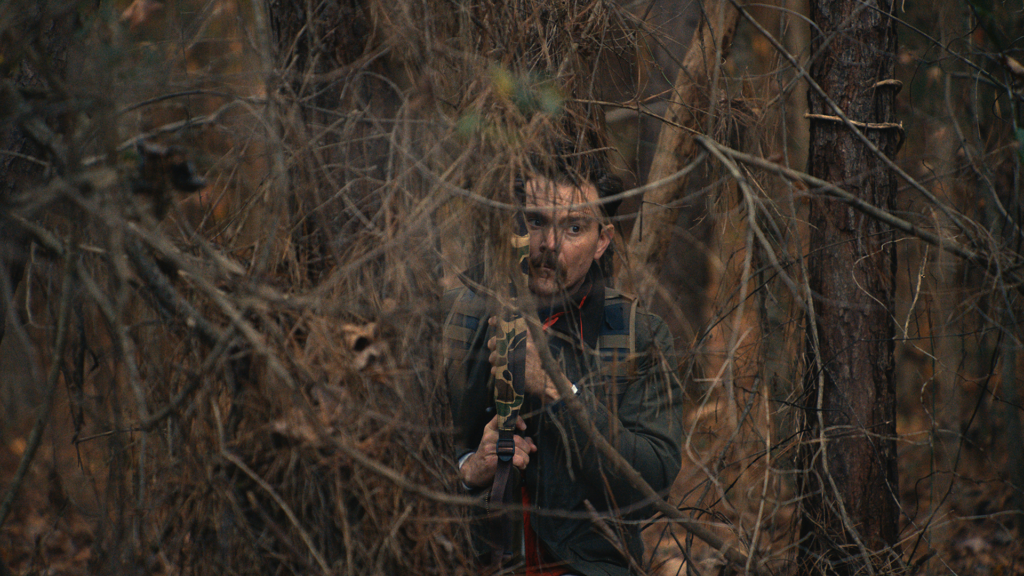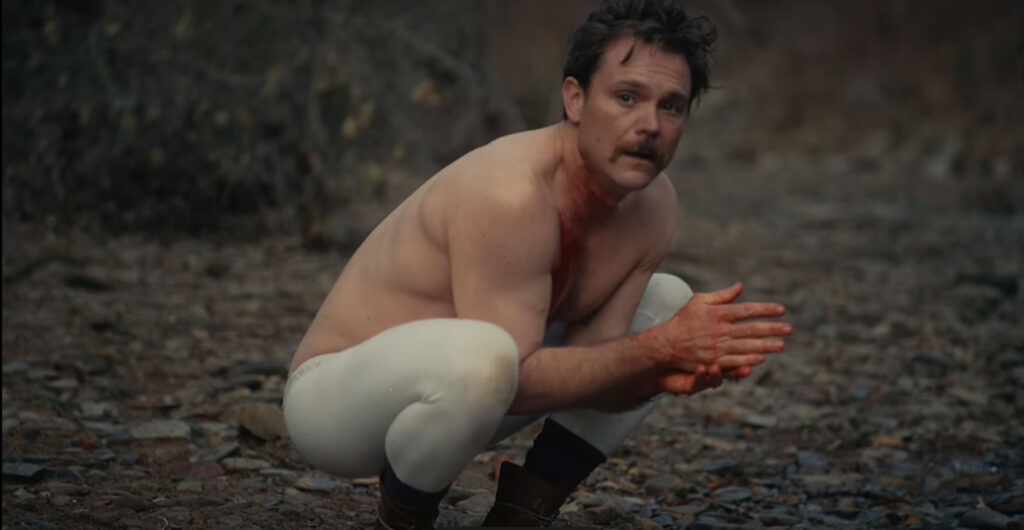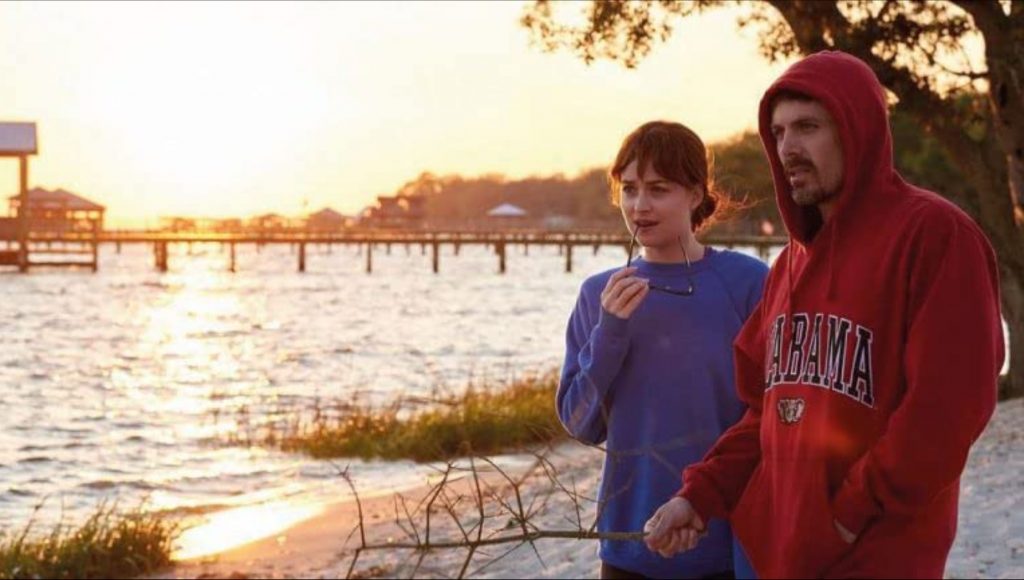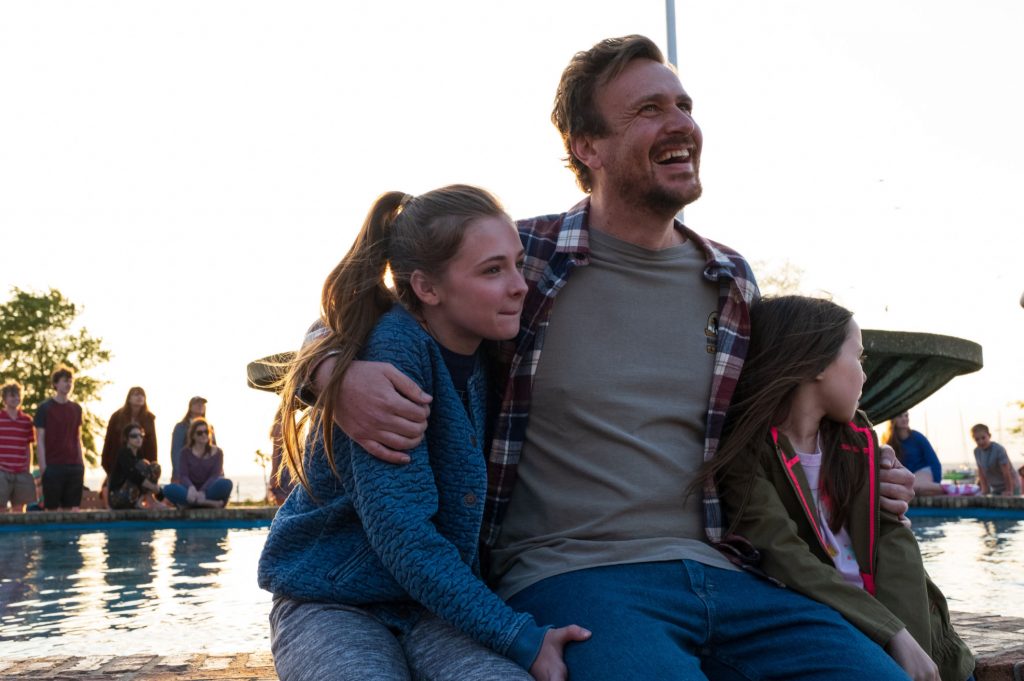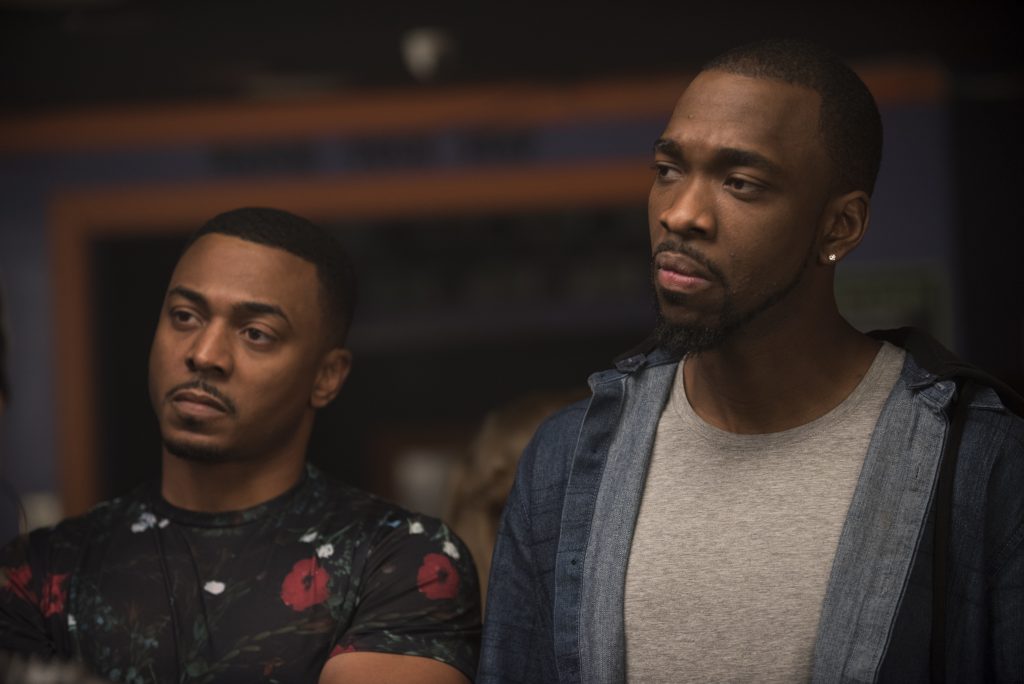October 29, 2022
by Carla Hay

Directed by Margaret Brown
Culture Representation: Taking place in Alabama and briefly in Washington, D.C., the documentary film “Descendant,” which was filmed from 2018 to 2021, features a predominantly African American group of people (with some white people and one Native American) talking about the historical impact of Clotilda, the last-known ship that illegally carried enslaved Africans to the United States in 1860.
Culture Clash: The enslaved Africans on this Coltilda voyage were brought to Alabama, where many of their direct descendants try to come to terms with the ramifications of their families’ legacies and how white supremacist racism still affects their lives.
Culture Audience: “Descendant” will appeal mainly to people who are interested in seeing impactful stories about African American family histories and the damaging repercussions of slavery and racism in the United States.

“Descendant” is a triumphant declaration of an important part of African American history that some people literally tried to bury. There’s a lot of heartbreak in this documentary, but there’s also a lot of hope. “Descendant” had its world premiere at the 2022 Sundance Film Festival, where it won the U.S. Documentary Special Jury Award for Creative Vision. “Descendant” also made the rounds at several other film festivals, including the 2022 SXSW (South by Southwest) Film Festival and the 2022 New York Film Festival.
When “Descendant” director Margaret Brown began filming the documentary in 2018, people had been searching for the remains of a ship called Clotilda for decades. As explained in the beginning of the movie, Clotilda was the last-known vessel to carry enslaved people from Africa to the United States, in an illegal voyage that took place in 1860. The international slave trade was abolished in the United States in 1808. In 1863, the Emancipation Proclamation legally freed enslaved people in the United States.
It is believed that Clotilda carried about 110 enslaved people to Alabama. The voyage was led by Captain William Foster, the owner of Clotilda. A wealthy business owner named Timothy Meaher reportedly bought many of the enslaved people from this voyage. Because this voyage and transaction were illegal, Clotilda was reportedly blown up to destroy evidence. Whatever was left of Clotilda was said to be buried in the water, off of the coast of Mobile, Alabama. (“Descendant” director Brown is originally from Mobile.)
Many of the descendants of the Clotilda captives still live in Mobile, which has a section called Africatown, where many of these descendants live. Karlos Finley, a municipal court judge in Mobile, says that from 1860 to about 1960, people in the area could get in a lot of trouble if they publicly talked about Clotilda. The ship was treated “like a dirty little secret,” according to Garry Lumbers, a descendant of Clotilda captives. The U.S. civil rights movement and the passage of U.S. civil rights laws in the mid-1960s led to more African Americans becoming more active in Black Pride activities, including finding out more about ancestral histories.
And for the descendants of Clotilda captives and other interested people, that meant finding what was left of Clotilda, in order to have a tangible and historical evidence linked to the legacies of an untold number of people. Many people in the United States can trace their family histories back to years before the United States became a nation in 1776. African people who were captured and enslaved in America had their personal histories erased with enslavement. And therefore, the descendants of these enslaved Africans don’t have the privilege of being able to trace back their family histories to the years before their enslaved ancestors were forced to live in America.
“Descendant” shows how, in July 2018, “local, state and national organizations coordinated a first-of-its kind search for Clotilda’s wreckage. Without the physical evidence, the story of the ship’s arrival in 1860, and the 110 captives it carried had been maintained largely by word of mouth,” according to a caption in the documentary. One of the biggest obstacles in finding the remains of Clotilda was conflicting information about where the remains were buried along the coast. In July 2018, the search began in Plateau, Alabama.
Throughout the years, a major resource for the history of Clotilda’s enslaved people came from historian/filmmaker Zora Neale Hurston’s book “Barracoon: The History of the Last ‘Black Cargo’,” which was originally meant to be published in 1931, but it stayed locked in a vault and unread by the public until 2018. “Barracoon” features extensive interviews with Cudjoe Lewis (1840-1935), the last-known survivor of Clotilda’s enslaved captives. Lewis was the unofficial leader of his community when the Emancipation Proclamation outlawed slavery, and formerly enslaved people had to navigate life as people who were legally free but still oppressed by white supremacist racism that denied equal rights to people of color in America.
Emmett Lewis, an Africatown resident and a direct descendant of Cudjoe Lewis, shares stories in the documentary about how his father, Emmett Lee Lewis (who died in 2008, at the age of 61), would take him as a child to a local graveyard in Mobile after midnight and teach him the family histories about their ancestors and other people buried there. “Descendant” has poignant footage of Emmett Lewis returning to this graveyard and visiting his father’s grave. The weight of his emotions can be seen on the screen.
Vernetta Henderson, one of the descendants of Clotilda’s last enslavement voyage, is seen in the documentary commenting in 2018 on the search for Clotilda. She says that she would feel a certain completeness if the remnants of the ship were found, because it would fill the void of unanswered questions. She adds, “The ship is evidence that it took place. It’s a story worth sharing with the whole world.”
By contrast, Joycelyn Davis, another descendant of Clotilda captives, is shown in 2018 commenting on the search for the ship: “I could care less about the ship. Ask the family who built the ship.” Although a few descendants of Clotilda owner Foster are shown and interviewed in “Descendant,” an epilogue in the documentary says that descendants of Meaher did not respond to requests to participate in the documentary.
It’s not spoiler information to say that remnants of Clotilda were eventually found in 2019, and were scientifically confirmed, as shown in the documentary. A documentary caption states, “Clotilda is the most intact wrecked slave ship to exist in America.” This historic discovery was big archaeological news and began a new chapter in the history of the Mobile area.
“Descendant” includes interviews and other footage of journalist/diver Ben Raines, who is largely credited with uncovering the crucial evidence that led to finding what’s left of Clotilda. Not surprisingly, Raines wrote a book about his Clotilda experiences: “The Last Slave Ship: The True Story of How Clotilda Was Found, Her Descendants, and an Extraordinary Reckoning.” The book was published in January 2022, the same month that “Descendant” had its world premiere at the Sundance Film Festival.
The discovery of Clotilda changed how Alabama (particularly Mobile) began to view Clotilda. No longer was it just a local legend that couldn’t be proven. The discovery of the ship also became a tangible piece of the puzzle for many people’s family histories. Imagine being part of a family that was told for generations that there was no proof that the ship that carried your enslaved ancestors even existed, because that ship was believed to be buried at sea. And then that ship was finally discovered.
The documentary includes a scene where a National Geographic-commissioned painting of that 1860 Clotilda voyage is unveiled at a press conference, with the painting showing the enslaved people naked and huddled in fear at the bottom of the ship. Even with the tragedies, abuse and human rights violations associated with slave ships such as Clotilda, the discovery of Clotilda also became a potential moneymaker for those who wanted to profit off of this discovery. Even before Clotilda was found, there were plans to turn whatever was found into a tourist attraction.
What makes “Descendant” a great documentary is that it goes beyond this historic discovery and looks at the bigger picture. It would have been too easy for the movie to focus only on the feel-good aspects of this story. The documentary points out uncomfortable truths about how Clotilda represents the shameful legacy of slavery and white supremacist racism in America.
“Descendant” shows and tells in no uncertain terms that Africatown (and, by extension, many communities where with the majority of the population consists of African Americans) is surrounded by industrial operations that bring pollution to the area. As pointed out in the documentary, the Meaher family is a powerful clan that owns or rents out much of the land and property that is believed to cause this pollution. It’s mentioned that Africatown has a high rate of cancer-related deaths that are believed to be caused by this pollution.
And so, although slavery is no longer legal in the U.S., “Descendant” makes viewers aware that there are other ways that African Americans are being harmed by decisions made by labor-related groups that are largely owned and controlled by white people, many of whom are descendants of people who enslaved Africans and African Americans. Many people in Africatown and similar communities are dying because of these decisions. The documentary gives considerable screen time to this issue in a way that is factual and not preachy.
Land ownership still plays a role today in the “haves” and “have nots” of society, just as it did when slavery was legal in America. Ramsey Sprague of the Mobile Environmental Justice Action Coalition explains why land ownership and environmental zoning are relevant to the legacy of Clotilda and the descendants affected by Clotilda’s last voyage: “The fight over zoning is the fight over destiny.”
The majority of the land in Africatown is owned by the state of Alabama. However, large swaths of the land are owned by the Meaher family, whose Chippewa Lakes company leases the land to industrial companies known for heavy industrial waste. If you think it’s nauseating for the documentary to show how Africatown is surrounded by factories pumping chemical smoke into the air, imagine what it’s like to live there.
Africatown resident Davis, who is living with cancer, went from being apathetic about Clotilda in 2018, to becoming an activist involved in Africatown’s environmental justice issues. She wants people to know about the entire legacy of Clotilda and other ships that carried enslaved people from Africa. Davis says the discovery of Clotilda has now given her more pride about her ancestors, as well as regret that she previously felt some shame about being a descendant of enslaved people from Clotilda.
In one of the highlights of the documentary, Davis goes to Washington, D.C., where she is given a tour of the Smithsonian National Museum of African American History and Culture by museum curator Mary Elliott. It’s an eye-opening and emotionally moving experience, where Davis can see for herself how Clotilda and Africatown are part of many similar stories of African American families and legacies. Elliott encourages Davis to be inspired by the museum and take what she’s learned to the work that Davis is doing to bring more attention to Africatown’s history. The documentary’s epilogue includes an update on Africatown Heritage House (a museum that’s set to open in the fall of 2022) and the Africatown Welcome Center, which is planned to open in 2025.
And although “Descendant” shows that Mobile declared a Descendants of Clotilda Day on February 8, 2020, to honor these descendants, the documentary never lets viewers forget that the irreparable damage caused by slavery still has lingering effects. Michael Foster, one of the descendants of Clotilda owner William Foster, is shown at this ceremony, where he is introduced to Robert Lewis, a descendant of Cudjoe Lewis. The two men have a cordial and brief conversation that is a little awkward. In a separate interview, Foster comments, “It’s kind of odd, because my relative caused all of this. I wouldn’t have come down here if I walked in that room and people were throwing rocks at me.”
After Clotilda is found, Kamau Sadiki, a master diver from the Slaves Wrecks Project, says emphatically, “Now, it’s time for justice.” Mobile municipal judge Finley says that although no one can be criminally prosecuted for Clotilda’s last voyage, there’s a possibility that members of the Meaher family, whose fortune was built from the work of enslaved people, could be held liable in a civil case. The issue of reparations comes up in “Descendant,” but most of the people who talk about reparations in the documentary say it would be very difficult to decide the amount that should be paid, when it should be paid, and to whom.
Henderson’s daughter Veda Tunstall, an Africatown descendant of Clotilda’s enslaved people, comments on the idea of getting and distributing reparations: “I have no idea how it’s supposed to work. As long as Timothy Meaher is not here, I don’t think there’s anyone to punish.” As for any measure of justice, people in the documentary say that, at the very least, historical figures who fought to keep slavery legal in the U.S. and/or were members of white supremacy hate groups should be not be celebrated by having things named after them or by having statues erected in their honor.
Other people interviewed or featured in the documentary include Africatown community leader Cleon Jones; folklorist Kern Jackson; National Geographic archaeologist in residence Frederick Hiebert; marine archeologist James Delgado; Yorktown Missionary Baptist Church pastor Chris Williams; “Barracoon” editor Deborah Plant; Alabama Tourism Department director Lee Sentell; reporter Nick Tabor; East Bay Automotive owner/Mobile resident Joe Turner; Clotilda captive descendants Lorna Woods, Patricia Frazier, Bobby Dennison and Darron Patterson; and Africatown community activists Joe Womack, Mae Jones and Anderson Flen.
“Descendant” doesn’t ignore these questions: “Who benefited the most from slavery and white supremacist racism? And who still benefits, even if it’s indirectly?” “Descendant” shows that events about Clotilda that involve money-making opportunities or media attention tend to attract a lot more white people than meetings intended to help marginalized and oppressed racial groups, such as meetings held by the Clean Health Educated Safe Sustainable group, which aims to bring solutions to the industrial-area Africatown pollution problems that disproportionately affect African Americans.
“Descendant” is the type of documentary that some people will never watch because they just don’t want to see any documentaries that remind anyone of the ugly history of slavery in America. Some people might think that movies like “Descendant” just fuel racism and bring up things that should be left in the past. But people who actually watch “Descendant” can see that it shows, through these very personal stories, racism actually thrives when people want to deny that it exists, but there’s a chance for healing when there are open and honest discussions about it.
Netflix released “Descendant” in select U.S. cinemas and on Netflix on October 21, 2022.

